More BLW Q&A: Ask Me Anything with Katie Ferraro
- Exposure to allergens: how many times does baby need to be introduced to the top allergens before it counts as “safe”?
- Counting introductions: What “counts” as an introduction to food? Does it count if baby doesn't eat it?
- Toddler's palate: How to expand the palate of a “picky eater” toddler who didn't do BLW? Is it ok to offer snacks? How do I encourage new foods?
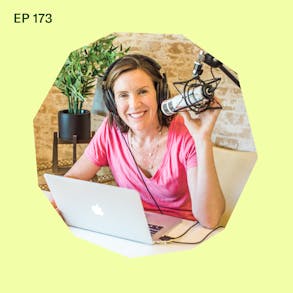
LISTEN TO THIS EPISODE
Episode Description
In this part two episode, I’m answering your called-in baby-feeding questions that you just can’t find the answer to anywhere. We will cover exposure to allergens, what “counts” as a food exposure and how to expand baby’s palate.
Links from this Episode
- Baby-Led Weaning with Katie Ferraro program with the 100 First Foods™ Daily Meal Plan, join here: https://babyledweaning.co/program
- Baby-Led Weaning for Beginners free online workshop with 100 First Foods™ list to all attendees, register here: https://babyledweaning.co/baby-led-weaning-for-beginners
Other Episodes Related to this Topic
- Episode 90: Picky-Eater Siblings + BLW Babies feat. Molly Ferraro
- Episode 55: How to Drop A Milk Feed

Latest Episodes
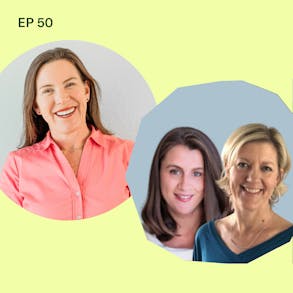
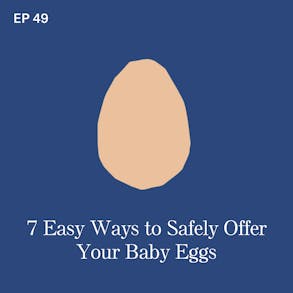

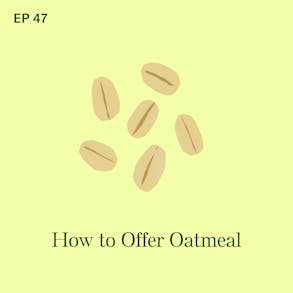

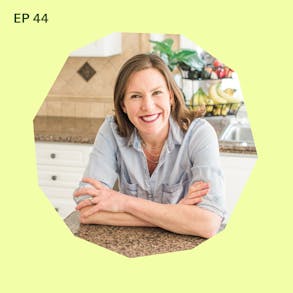
Katie Ferraro (1s):
Sometimes parents feel like, oh, I'm going to try different food. If they don't eat it, then I'm going to finish the meal off with the food. He likes like berries or yogurt. If I can suggest anything it's to, try not to get in the habit of offering the same food every day. Hey there M Katie Ferraro Registered Dietitian college nutrition, professor and mom of seven specializing in baby led weaning here on the baby led weaning made easy podcast. I help you strip out all of the noise and nonsense about feeding, leading you with the competence and knowledge. You need to give your baby a safe start to solid foods using baby led weaning. Hey guys, Katie here.
Katie Ferraro (42s):
I did it episode a little while back. That was a Q and A Ask Me Anything where you guys called in with your questions. And it was like the stumper questions, like the ones where you've like, I looked it up, but I cannot find the answer anywhere. And I answered a few of them. It was so much fun. I wanted to do it again. So I'm doing another episode, which is More BLW Q and A. Ask Me Anything. I know a lot of you guys might have similar questions, so I'm hoping the answer to these will help you. Or as I think you'll find a lot of the answers to these questions is like, yeah, you're right. The ads are just doesn't exist. And I want you to stop worrying about it if you can't find the answer to it. So with no further ado, here's a little bit more BLW Q and A.
Katie Ferraro (1m 23s):
Ask Me Anything. Thanks for the question. Love you guys.
Megan (1m 26s):
How many times should you expose your baby to the top allergens? Assuming they have no reaction before, you know, it's safe and can include it with other new allergens. So for example, if you've introduced to yogurt before and they haven't had any allergic reactions after say four exposures, and you want to now mix it with peanut butter, but have never previously introduced peanuts before.
Katie Ferraro (1m 55s):
Hi Megan. Great question. And you're right. There's no exact number of times that we should introduce Baby to an allergenic food in order to know for certain that the baby has had adequate exposure to that to help prevent with a food allergy down the road. So parents like to, to say like, tell me just how much, like how many grams of X protein I should give and tell me how many times I should feed it and I'll take X grams and I'll feed it Y times. But the reality is that evidence and that data just doesn't exist. And so parents get so frustrated and I'm right there with you with the guidance to introduce allergenic foods early and often, they're like exactly how early and exactly how often as far as early goes from most of the data, it appears that earlier is better, right?
Katie Ferraro (2m 37s):
We got to wait until baby is safe to eat foods. So that's around six months of age, but it appears that the protective window for winter introduced allergenic foods, that it kind of closes at around the 11 month mark. So between six and 11 months of age, we want to be doing these foods early. And often personally, when I teach my five-step feeding framework, we introduced five new foods a week. And on the fifth day of the week, we do for the first nine weeks, at least to baby led weaning. We do the allergenic foods. I'll offer that two times on Friday, two times on Saturday and two times on Sunday with no other new foods introduced over the course of the weekend. Of course I'm reintroducing familiar foods from previous days. I don't like just feed shellfish all weekend long, but I don't introduce other new foods because I want to be observing for any reaction from that potentially allergenic food shellfish.
Katie Ferraro (3m 21s):
But having said that like, is there anything to say that on the seventh exposure, your baby wouldn't react? No, certainly not Babies can react on the second or subsequent exposure and we never really know exactly how much quote unquote counts. But what we do know is that like one and done, doesn't cut it. So some parents like, oh, I tried wheat once. And so now we've done wheat. No, you got to continually be introducing these allergenic foods. So you're not missing anything. There's no hard and fast number of times or number of grams that quote unquote counts for allergenic food introduction.
Addie (3m 49s):
My name is Annie and my daughter is Olivia and she's almost six months old. So we're about to start baby led weaning. And I was just wondering if in the beginning she doesn't really eat any of the food. Does that still count as trying that
Katie Ferraro (4m 2s):
Good? Oh, Addie, another cow D question. I love it. There's not a hard and fast rule for what quote, unquote counts as a taste. It is interesting though, if you look at some of the infant feeding research in certain studies, the way they design it, they count a taste as when the baby swallows it. But I take issue with that because as you guys know, early on in baby led weaning, there's actually very little quote, unquote swallowing taking place. And so I'm like, wait a minute. We tried like 10 different foods. I really don't get to count any of these. So the way I count it is if I took the time to prepare the food for the baby and put it on their plate. And if they touch it that counts now, I'm not just going to do it once and say, we're never doing that food again. You got to introduce these foods early and often, but remember that touching the food and smashing it and smashing it in your nose or wherever your hair, it's actually all part of the sensory experience that is learning how to eat.
Katie Ferraro (4m 54s):
So I wouldn't get too hung up on, you know, did it actually go in her mouth and did she actually swallow it? It's like, Hey, she's seen what broccoli is. And she's going to see broccoli a bunch more times. And then eventually she will like unaccept broccoli and you gotta remember, it is not our job to make the baby eat the food, right? It's our job to offer a variety of foods, to offer them in a safe space to offer them at a set meal times. But let's let our baby decide whether or not they want to eat the food. That's the division of responsibility in feeding theory that Ellyn Satter laid out in espouses. And I think it's so important for us to remember what our job is. Keep doing a great job though. Ani offering a variety of different foods and it will click in a few weeks or months. Your baby will start actually eating all those foods that you're preparing.
Katie Ferraro (5m 35s):
And then you can count the heck out of them, but I'll count them. As soon as I'm putting them on the plate.
Pamela (5m 38s):
I have a toddler that is extremely picky. I never did. Baby led weaning with him. I'm starting this train a little late. I have a baby, a three month old. So I'm hoping to get him started later, but I'm really curious about to how to best approach it because my toddler is very picky and I don't know how to encourage him to try new foods. We constantly try to just put things in front of him. And there are days that she just doesn't want to touch anything. So I get tempted to try to give him a snack later, how to go about the feeding him, what I want him to eat and not giving into letting her snack. If he doesn't need what I want him to do.
Katie Ferraro (6m 18s):
Oh, Pamela, you got your hands, full girl with the toddler. And then the baby. I know it's a lot to juggle and I feel your pain too, because I had a picky eater. Who's my oldest. And then we did baby led weaning with our next Babies. And to be honest, it didn't totally cure her of her pickiness, but I've got to say that if it's at all possible to get the older kid involved in the preparation of the foods, or even just the offering of the foods, to the Babies, I love to take advantage of toddlers, like inherent competitiveness, like, oh your baby, sister's trying this food. Do you want to show her how it tastes? Do you want to explain what it looks like? Do you want to tell her what color it is? What's it going to feel like in her mouth, sometimes engaging if you can, again, struggling, but both of those kids at mealtime can actually help the toddler.
Katie Ferraro (7m 0s):
And what's so cool about baby led weaning. It's actually one of the few things that appeals to a second-time parent, right? Cause a lot of parents will do with their first baby traditional spoon-feeding baby ends up being a picky eater. Not because you did spoon-feeding, but there's a less likelihood of the severity of picky eating. If we do baby led weaning. So sometimes parents are like, hang on, I'm going to try this the second time around. It's actually can expand the palette of your toddler as well. But I know like the real life struggle of you're trying to get food ready for everyone else. And then the toddler is walking around telling you that they're hungry. And to be honest, if they're eating snacks or drinking milk all day long and they're never allowed to feel casual hunger, then yeah. It's not surprising that these toddlers don't want to eat at meals. So don't be afraid to let your child experience a little bit of casual hunger.
Katie Ferraro (7m 41s):
And I know you're dealing with a stubborn toddler, which can be a challenge as well, but I actually have a podcast episode about doing baby led weaning. When you have picky eating siblings, this is episode 90, actually interviewed my seven year old on it. She's the one that's still is a little bit more selective than our other kids who did do baby led weaning. But I have additional tips in there about how to deal with that picky eating toddler. When you're trying to start baby led weaning with that next baby, you had to BLW podcast.com/90. You can listen to that episode.
Jazlyn (8m 11s):
Hi, my name is Jazlyn and my baby's name is Mihir. And the question that I have for you is, so my baby is 10 months old and I started doing traditional spoon-feeding for first couple of months, just because of the culture that I come from. There's a lot of anxiety. You have a baby led weaning approach. And then I am now I would say probably nine it's been a month where I've been starting to allow him to actually do finger foods and allow him to pick his food. He's really good with certain fruits and veggies, but not so good with everything else. So he's very picky, I think in the sense that for example, if I keep bringing, you know, oranges and he hasn't liked oranges and he's thrown them on the floor, he's going to make sure he's not going to have the orange, the fifth or the sixth time that you bring it to him.
Jazlyn (8m 59s):
So I'm not sure what I can do to have him change his mind and try the fruit or veggie. So I'm really struggling with that. So he's very picky. He's very, I would say stubborn as well in terms of what he has eaten in the past. So yeah, any help that you can give or any advice you'd have, that would be really appreciated. Thank you.
Katie Ferraro (9m 17s):
Thanks for the question. Jazlyn and ten month old babies are tricky, right? Because when they're dropping food and throwing food, they're kind to do it to get your goat. They're trying to see what sort of a reaction they can get from you. At six months of age when they're dropping food is cause like they don't know what to do with it in their hands yet, but by 10 months of age, it's great that you're allowing your baby to start picking up the foods and feed himself because he certainly can. You mentioned fruits and vegetables, and those are great foods out there for babies, but they're really only two of the food groups that Babies can eat. And so, especially for a 10 month old, even earlier on, if you guys are listening to this in your back at six or seven months of age, try to be offering a variety of different foods, including whole grains, carbohydrate foods and protein foods.
Katie Ferraro (9m 60s):
Cause that's where the iron is. Plus all of the allergenic foods are protein foods and we want Babies to be exposed to those. So sometimes parents feel like, oh, I'm going to try different food. If they don't eat it, then I'm going to finish the meal off with the food he likes like berries or yogurt. And just if I can suggest anything it's to try not to get in the habit of offering the same food every day, oh, I'll just finish the meal because he needs to quote unquote, get enough. He doesn't a 10 month old can start to feel some casual hunger. And when he's hungry, start responding to those hunger cues by feeding himself the food. So maybe take a look at your milk schedule. I'm concerned if he's throwing like all the foods that he used to, like it might be that he's coming to the table and not feeling any hunger. So maybe he's still drinking as much milk as he did when he was six or seven months of age or milk too close to mealtime.
Katie Ferraro (10m 45s):
So let's analyze the milk feeding schedule. And if you're interested in how to drop a bottle or a milk fee to have a podcast episode, number 55, it's called how to drop a milk feed. I think that might help you if you're just worried about the milk. But when you think about the foods that you're offering, try not to offer a food that your baby sees every day, every day. And when it comes to fruit, parents will always say, oh my gosh, my baby likes fruit more than vegetables. Well, of course that's a natural tendency. We have a proclivity for sweet foods. So we should just be in the habit of offering as many vegetable offerings as we can. That equate to the number of fruit that we're doing or even more. And it's okay to take a break from fruit. If you feel like your baby is favoring fruit, take a fruit vacation, take a break from offering fruit for a few meals.
Katie Ferraro (11m 32s):
Or even for a few days, it kind of pushes us out of our comfort zone too, to be offering more vegetables. And then at the end of the day, you've got to remember that it's not your job to make your baby eat. And I know jazlyn , you feel like, oh my gosh, but Sundays, he eats it at some days. He doesn't, that's just how babies are. They're kind of finicky. Some days they're going to eat a food. They ate yesterday. Some days they're gonna look at the food. Like they've never seen it before and whether they eat it or whether they don't, it's not your fault and you don't have to make your baby eat. That was so much fun. I love hearing from you guys. Thank you for the awesome questions. I hope they helped you. Or if you're wondering the same thing to be like, okay, cool. I don't have to stress about that anymore because there's really not an answer to it. And that's like the reality with a lot of stuff in infant feeding a lot of stuff with babies and raising kids, right?
Katie Ferraro (12m 13s):
It's like we can learn from each other's best practices. We can learn from research. We can learn from experiences, but sometimes what works for one family doesn't work for another family. And that's totally fine. So if you guys want to check out some of the other episodes that I mentioned in the answers to today's questions, cause like sometimes I've done a whole podcast episode on that or have another resource with more in-depth answers. I'll link to everything from today's episode on the show notes, which you can find at BLWpodcast.com. And if you guys want to grab my hundred FIRST FOODS LIST, so you can start knocking them out for your baby too. If you're like short on ideas of, huh, I need some more, better vegetables to feed my baby to equate to the fruits I'm offering or whatever it is. I give away my free a hundred FIRST FOODS LIST to everybody on my weekly workshop called Baby LED WEANING FOR BEGINNERS.
Katie Ferraro (12m 60s):
This is all about how to offer your baby 100 FOODS before turning one, without you having to buy any pouches or spoonfeed purees. And you can sign up for this week's workshop times at babyledweaning.co. I also host a big Q and A at the end of that workshop. And I make a point to answer every single question that gets submitted. So sometimes I can't get to them on the workshop, but I always follow up by email. So if by any chance you submitted a question for this episode, but it didn't get answered or you still have questions. Check out the workshop at babyledweaning.co and maybe I'll see you guys there. Bye now.
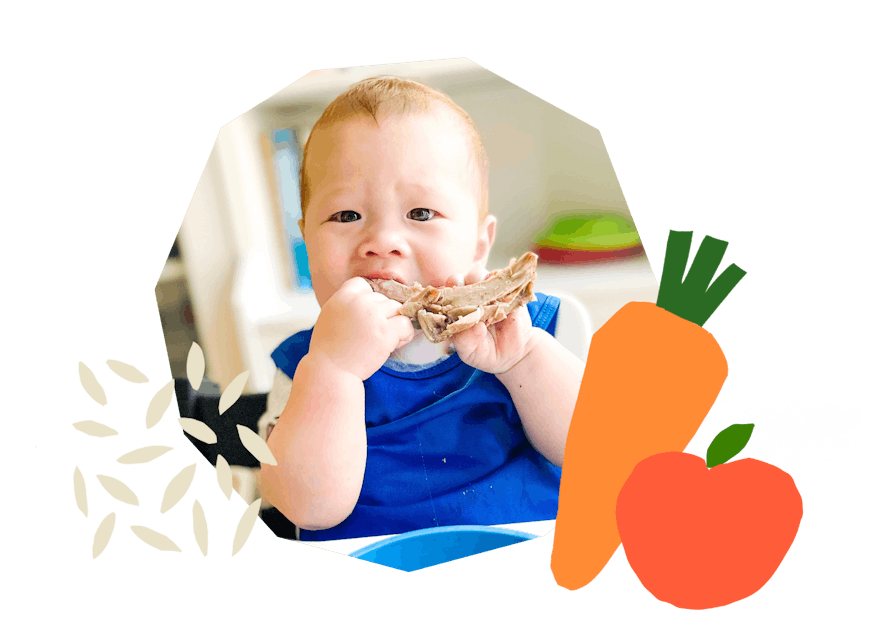
The Program Baby-Led Weaning with Katie Ferraro
A step-by-step digital program for starting solid foods safely and navigating the original 100 FIRST FOODS™ meal plan with baby-led weaning.
 EXPERT-LED, PROVEN APPROACH TO EATING REAL FOOD
EXPERT-LED, PROVEN APPROACH TO EATING REAL FOOD CONCISE VIDEO TRAININGS TO MASTER BABY-LED WEANING
CONCISE VIDEO TRAININGS TO MASTER BABY-LED WEANING 100 FIRST FOODS DAILY MEAL PLAN WITH FOOD PREP VIDEOS
100 FIRST FOODS DAILY MEAL PLAN WITH FOOD PREP VIDEOS
Baby-Led Weaning for Beginners Free Workshop
Is your baby ready to start solid foods, but you’re not sure where to start? Get ready to give your baby a solid foundation to a lifetime of loving real food…even if you’re feeling overwhelmed or confused about this next stage of infant feeding.
Get baby-led weaning recipes and tips delivered to your email inbox.

